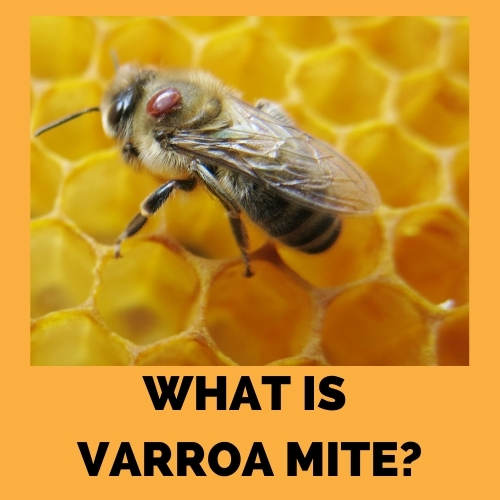
What are Varroa Mites?
Varroa mites (Varroa destructor or V. destructor) are parasites to honey bees. This means that the Varroa mites actually feed on honey bee hosts to survive and reproduce.
The Varroa mite is only able to reproduce on bee brood (young bees), while only adult female Varroa mites are able to feed on adult honey bees. This means the entire life cycle of a Varroa mite occurs within the honey bee colony.
The varroa mite is recognized as the most damaging pest to the honey bee in the world. They can live on adult honey bees, yet they usually feed on larvae and pupae in the brood. This causes a weakening of the colony, as well as the transmission of several viruses.
Varroa destructor is a relatively large mite and can be seen with the unaided eye. It attaches itself to both adult bees and brood. The Varroa life cycle begins when a pregnant female Varroa mite enters the cell of open bee brood. After the bee larvae are capped, the female mite will move to the abdomen of the prepupa and chews a wound in its outer layer, and lays eggs.
One son Varroa mite and several daughter mites emerge, mature, and mate. The first mite keeps the wound open to provide a feeding site for her young. If the bee survives all of this, it is born out of its cell and the mated daughter mite comes out with it, ready to start the cycle on other bees.
VARROA MITE IS THE ENEMY OF THE HONEY BEE
Obviously, if a host to Varroa, the bee’s health is compromised from the start. It will suffer from reduced blood volume, mechanical injury, reduced blood protein, and any number of viruses and bacteria. Once compounded across the colony, it will typically result in a decline then collapse of the entire colony.
In the last 30 years, there has been increased use of screened bottom boards. There is evidence that screen floors increase brood production and therefore reduce the growth rate of parasitic varroa mites.
That’s one thing that can help with Varroa. In our next post, we’ll talk about the different ways to treat Varroa mite. Stay tuned!



